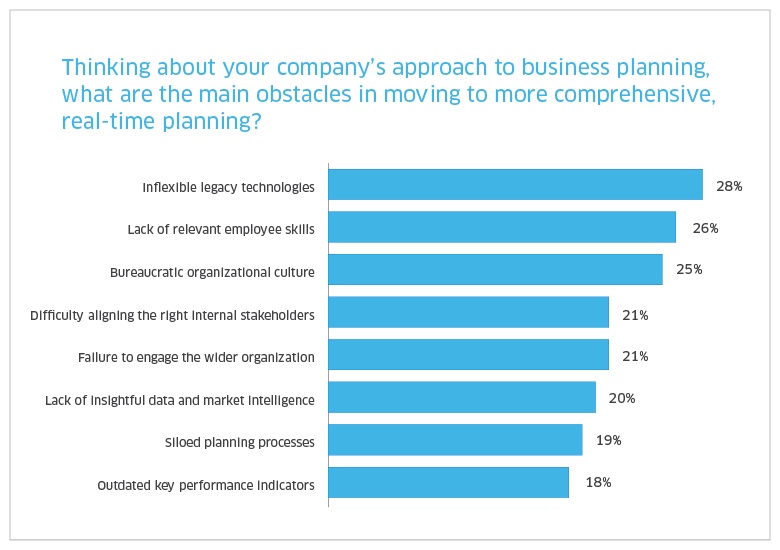Organizational agility: The power of continuous planning
Our recent research (at Workday) shows that only a small group of high-performing elites have adopted an active planning process.
adminA1S
Updated on
Share:

Simplify your workflow in minutes.

Simplify your workflow in minutes.


Our recent research (at Workday) shows that only a small group of high-performing elites have adopted an active planning process.
Companies that cling to old ways of planning are about to be left behind. Geopolitical and economic landscapes are changing at the speed of a 24-hour news cycle, and organizations that fail to keep up face a difficult future.
Outdated planning processes, defined by long planning cycles, siloed efforts, and too little time for strategic analysis, no longer fit this dynamic world. To thrive, companies must respond to change in real time.
Our recent research, “Organizational Agility at Scale: The Key to Driving Digital Growth,” finds that only a small group of high-performing elites are able to do this. The global survey of 998 senior executives and business leaders reveals that very few organizations have adopted an active planning process – collaborative, comprehensive and continuous planning.

“Traditionally, organizations have built their budgets, plans and forecasts along functional lines. But business processes no longer respect functional boundaries.”
Tom Bogan, CEO of Workday Adaptive Planning
“A continuous approach to business planning has many benefits,” Bogan says. “Plans must be consistent to ensure that resources are allocated efficiently and to avoid performance goals in one area having unintended consequences in another.
Continuous planning recognizes the importance of these interrelationships,” he adds. “And enabling technologies that allow different functional – and often interdependent – areas to collaborate during the planning cycle.”
But most organizations still have a long way to go to develop the capabilities they need to respond to market changes in real time, at scale.
According to our research, the top three barriers to more comprehensive, real-time planning are inflexible legacy technologies (28%), lack of relevant employee skills (26%) and a bureaucratic culture (25%).
Just as continuous planning is the foundation for organizational agility at scale, a clear approach to strategy and execution is what will make continuous planning successful.
Fewer than one in five (18%) report that their approach to strategy and execution allows them to respond with flexibility and speed to market changes. The remaining majority who are unable to respond in this way are at risk in today’s volatile economic and geopolitical landscape.
On a more positive note, those who have made significant progress in implementing a technology strategy to support their shift to continuous planning are five times more likely than those who haven’t to report that their organization responds with agility and speed to market changes (22% and 4% respectively).
Accelerate planning cycles to overcome legacy IT constraints. Use the right tools and technologies to gather real-time transaction and reporting data for organization-wide oversight.
Leverage the skills they need to respond with agility. Acquire the skills that help them overcome siloed planning and prevent internal misalignment.
End the bureaucratic culture and empower employees. Empower those closest to the point of action to ensure that planning is done at the right level of the organization and that plans are up-to-date.
Together, these three capabilities form the basis for an active approach to planning that is comprehensive, collaborative and continuous.